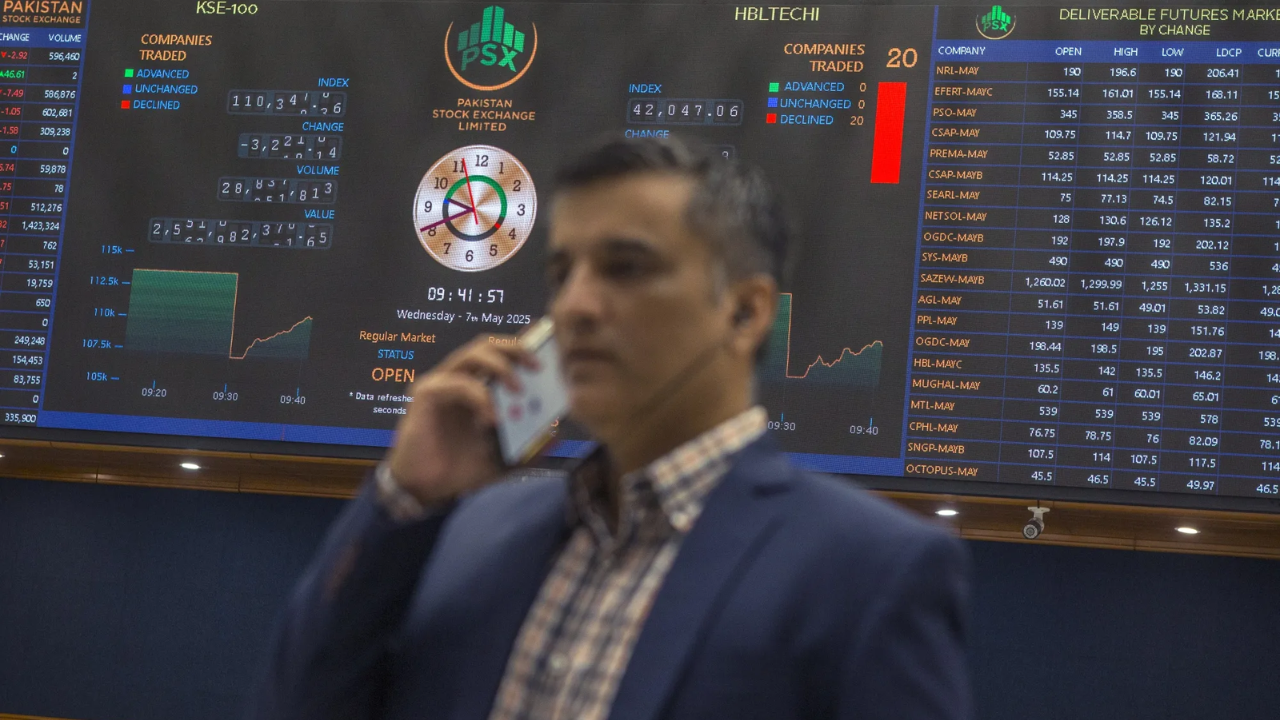
By: Aditi
Published on: May 12, 2025
Pakistani and Indian Stocks Surge as Ceasefire Shifts Focus to Economic Growth
In a historic turn of events, stocks in Pakistan and India soared this week following a ceasefire agreement between the two nuclear-armed neighbors. The truce, announced after weeks of escalating military clashes along the Kashmir border, has reignited investor confidence and shifted market focus back to economic growth prospects in South Asia. Pakistan’s benchmark KSE-30 Index surged 9.3%—its largest single-day gain since 2008—while India’s NSE Nifty 50 climbed 3.8%, signaling renewed optimism in regional stability.
For weeks, investors braced for volatility as India and Pakistan traded artillery fire and diplomatic barbs. Pakistan’s stock market had plummeted 9% since April 22, when a cross-border attack in Kashmir prompted Indian retaliation. Similarly, India’s Nifty 50 slid over 1% last Friday, with the rupee emerging as one of Asia’s weakest currencies. Bond yields crept upward amid widening risk premiums, though aggressive debt purchases by the Reserve Bank of India (RBI) cushioned the blow.
The ceasefire announcement over the weekend reversed this trajectory. Pakistan’s KSE-30 Index triggered an hour-long trading halt as buying activity spiked, while India’s markets—closed Monday for a public holiday—saw offshore rupee trading jump 0.9% against the dollar. Analysts attribute the rally to reduced geopolitical risk and renewed attention on both nations’ growth narratives.
“The developments are a move in the positive direction,” said Vivek Dhawan, a Brussels-based fund manager at Candriam. “Investors can refocus on India’s structural growth story, including liquidity conditions and rate cut expectations.”
While the truce remains the immediate catalyst, broader macroeconomic factors are amplifying the bullish sentiment:
US-China Trade Deal Optimism
A provisional trade agreement between Washington and Beijing eased global market jitters, providing tailwinds for emerging markets. India, positioned as a manufacturing alternative to China, stands to benefit from supply-chain diversification efforts.
IMF Lifeline for Pakistan
The International Monetary Fund (IMF) approved 1billioninimmediatedisbursementtoPakistanalongsidea1billioninimmediatedisbursementtoPakistanalongsidea1.4 billion climate resilience package. This bolsters Islamabad’s fiscal stability, which had been overshadowed by border tensions.
Monetary Policy Shifts
Pakistan’s State Bank surprised markets with an interest rate cut ahead of the ceasefire, aiming to stimulate growth. In India, expectations of RBI rate cuts and robust foreign inflows—which lasted 16 days until Friday—are likely to resume as risk appetite rebounds.
Despite the euphoria, skepticism lingers. Hours after the ceasefire declaration, an Indian diplomat accused Pakistan of violating the truce—a claim Islamabad denies. Such incidents underscore the fragility of peace in the region.
Additionally, India’s threat to suspend the Indus Water Treaty looms. The treaty, which governs water sharing of the Indus River system, is critical for Pakistan’s agriculture. Its abrogation could reignite tensions and destabilize markets.
“Reports of violations cast doubt on the ceasefire’s sustainability,” noted Barclays strategist Avanti Save. The bank remains overweight on Pakistani credit but warns of potential rupee volatility if tensions resurface.
In Pakistan, sectors tied to consumer spending and infrastructure are poised to lead the recovery. The IMF’s climate resilience funding could accelerate green energy projects, while the central bank’s rate cut may spur borrowing.
India’s rally was broad-based, with financials, IT, and industrials outperforming. Analysts highlight the RBI’s liquidity support and progress toward a US trade deal as key drivers. The rupee’s rebound and declining equity volatility—evidenced by surging demand for Nifty 50 call options—reflect improving risk sentiment.
For Pakistan, the upcoming MSCI index review—where its weighting could increase—and the federal budget announcement in June are critical. A higher MSCI allocation would attract passive foreign inflows, while fiscal reforms could enhance investor confidence.
In India, all eyes are on RBI policy meetings and the government’s infrastructure spending plans. A successful US trade deal, which may lower tariffs on Indian exports, remains a potential catalyst.
Market participants advocate cautious optimism. “The ceasefire allows economic reforms to regain center stage,” said Ali Raza of BMA Capital. Pakistan’s rate cut and IMF disbursements, previously overlooked, are now back in focus.
Similarly, India’s growth trajectory—supported by a young workforce and digitalization—remains compelling. Foreign investors, who paused purchases last week, are expected to return, drawn by attractive valuations and reform momentum.
The India-Pakistan ceasefire has provided a much-needed reprieve for markets, but its longevity is uncertain. Both nations face pressure to prioritize economic recovery over geopolitical posturing. For Pakistan, IMF support and reforms are vital to stabilizing its economy. India, meanwhile, must navigate global trade headwinds while sustaining domestic growth.
While the truce has shifted focus to growth, investors must remain vigilant. Any escalation could unravel gains swiftly. For now, though, the rally signals hope—not just for markets, but for millions in South Asia yearning for peace and prosperity.
Comments
No comments yet. Be the first to comment!
Leave a Comment